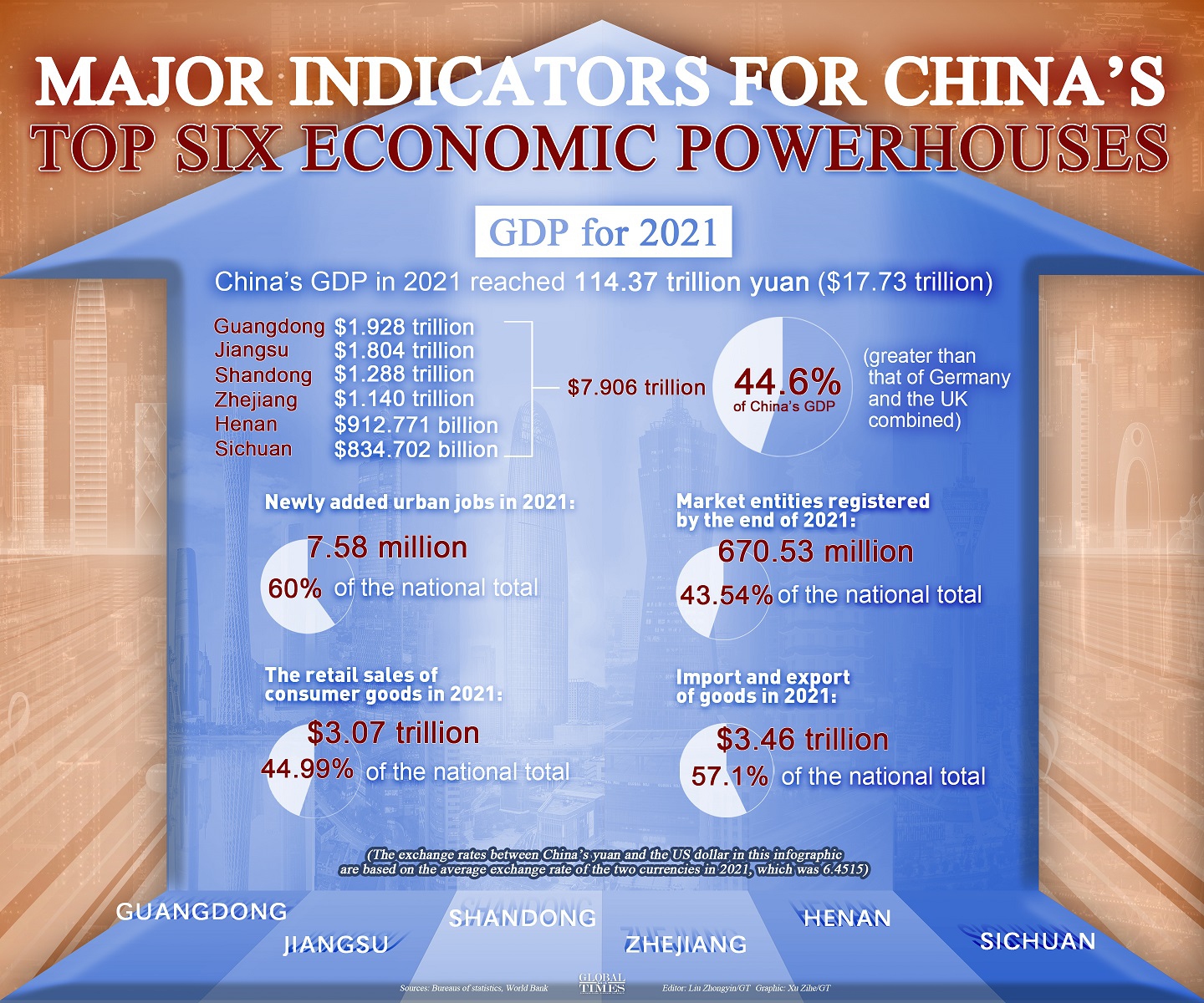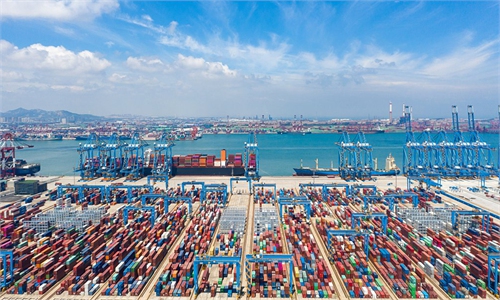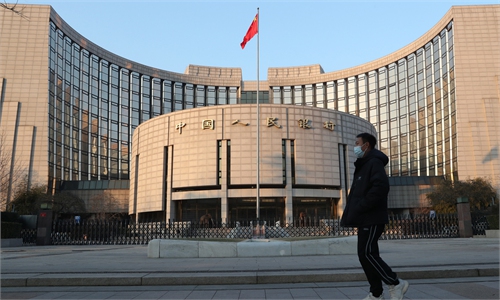China dials up mobilization push for regional economic powerhouses to rev up recovery

A view of Shenzhen, South China's Guangdong Province.Photo: VCG
In a fresh call to prompt China's largest provinces in economic terms to be at the forefront of the national stabilization push, Premier Li Keqiang made an inspection tour in Shenzhen, Guangdong on Tuesday and Wednesday, during which he emphasized the pioneering role of the city and the province.Guangdong and Shenzhen are at the vanguards of the country's reform and opening-up and have relied on the reform and opening-up to achieve drastic changes. Guangdong is the No.1 economic province and Shenzhen has developed into an internationalized metropolis, the premier stated, calling for the duo to continue their pioneering roles in opening up the economy and serving as the economic mainstay, thereby making greater contribution to national development, according to the state broadcaster CCTV.
China has dialed up a mobilization push for its regional economic powerhouses to play a central part in revving up the recovery of the world's second-largest economy, injecting optimism into the economic resilience despite a gloomy and increasingly uncertain outlook globally.
South China's Guangdong Province is among the economic heavyweights named to spearhead the national stabilization mission. Guangdong, along with several other powerhouses, is expected to tune up local commitments to infrastructure projects as part of a broader drive to meet their annual growth goals, economists said.
As these provinces gear up for a fuller-throated endeavor to maximize their growth potential, the Chinese economy as a whole is set to embrace a more synergized rebound, the economists noted.
They reckoned effective central-local interactions that exemplify the country's institutional strengths to translate into a cohesive approach to reviving the economy, in stark contrast to an ailing US economy in the context of a lax duo of federal and state governments.
Spurring on economic powerhouses
A visit to Shenzhen-based new-energy vehicle giant BYD was part of the inspection where Li vowed to ramp up moves to extend the implementation of tax policies intended to support NEVs and accordingly expand consumption in the sphere of big-ticket items.
Additionally, the premier presided over a symposium on the economic situation in Shenzhen on Tuesday where he urged efforts from the country's economic powerhouses to meet their due responsibilities on consolidating economic recovery.
Leading officials of six major economic provinces - Guangdong, East China's Jiangsu, Zhejiang, Shandong, Central China's Henan and Southwest China's Sichuan provinces - spoke at the meeting or via video link, Xinhua reported.
Noting that China's economy is in a critical stage of stabilization, Li urged the economic powerhouses to ensure solid implementation of a package of pro-growth policies while leveraging policies to energize market entities, smooth logistics, and stabilize industrial and supply chains.
The six provinces account for 45 percent of China's total economic output, boast over 40 percent of the country's market entities, which offer 40-plus percent of the country's job opportunities. Additionally, their combined imports and outputs make up nearly 60 percent of the national total and their actualized foreign investment adds up roughly 60 percent of the country's total, official data showed.
Put in perspective: Guangdong, which topped the national GDP rankings in 2021 with a GDP of 12.44 trillion yuan ($1.83 trillion), has an economy larger than that of South Korea, whose GDP at current prices hit close to $1.8 trillion last year, per World Bank data.
The GDP of Sichuan Province, the sixth-largest economy on the national GDP rankings with 5.39 trillion yuan in 2021, is tantamount to Switzerland's.
Such numbers speak volumes about their role as the economic backbone, making the case for a reiterated call for them to carry a big responsibility in rebooting the economy amid the fallout of COVID-19 and mounting geopolitical tensions, among other uncertainties.
A meeting of the Political Bureau of the Communist Party of China Central Committee held in late July encouraged major economic provinces to play a pivotal role. Eligible provinces were also encouraged to strive to meet their economic and social development targets.
In early July, Premier Li also encouraged coastal provincial-level regions in southeastern China to play a pivotal role in stabilizing the economy.
The ramped-up push came on the back of a slowdown in economic activity over July amid lingering headwinds from both home and abroad.
A slew of pro-growth measures have been implemented in the wake of a national video teleconference on stabilizing the economy held in May. Still, local governments need to prove how effectively they have flexed their muscles in propping the local economy, factoring in deepening growth woes amid more uncertainties, Jia Kang, head of the China Academy of New Supply-Side Economics, told the Global Times on Wednesday.
The State Council, China's cabinet, held the unprecedented national video teleconference with reportedly upward of 100,000 participants in late May. The gathering came across as a precursor of an economic rebound throughout June.
Nonetheless, the renewed domestic Omicron flare-ups, adding to lackluster property investment and sales numbers as well as growing fears of a US-led global recession, turned out to be roadblocks standing in the way of the economic rebound.
That renders the mobilization campaign an imperative push, experts said.
If the six economically stronger provinces were to meet their growth goals, their contribution to national GDP would increase to more than 45 percent or even 50 percent, Chen Jia, an independent analyst, told the Global Times on Wednesday.
According to their preset growth targets for 2022, the six provinces had planned an annual expansion of at least around 5.5 percent in the case of Guangdong, or a maximum 7 percent on the part of Henan. By comparison, the central government set the annual growth target at around 5.5 percent for the entire economy during the annual two sessions in March.
If all the six provinces can achieve their GDP targets set earlier this year, they will contribute to 3 percentage points of the country's nominal GDP growth this year, Tian Yun, former vice director of the Beijing Economic Operation Association, told the Global Times on Wednesday.

The cityscape of Chengdu. Photos: VCG
Playing to institutional strengthsTo play a leading role in stabling the economy, the six provinces need to meet their own growth targets, properly handle overall economic planning between the central and local governments and cooperate with each other under the broader goal of driving the national economy, Chen said.
It is expected that the central government may reasonably step up policy support to boost the economic development of the six provinces with support to grow local characteristic industries and ensure labor resources, Chen said.
The key provinces are chosen for their stronger economic foundation and strength, Tian said, so if the policies and resources lean to these key provinces, the efforts to stabilize growth are likely to take effect more quickly.
A key driving point to grow economy in these provinces could be the investment in infrastructure, Tian said.
For example, Shandong, Henan and Sichuan provinces are large economies with large populations, prosperous flow of people and logistics and uneven development within the region with a large demand for infrastructure upgrading. If concentrated pro-investment policies are implemented in these regions, the contribution to economic growth will be significant, Tian said.
"I think there is no doubt about China's institutional advantage in coordinating the central and local governments to address the economy downward pressure. In particular, its ability to stabilize economic growth by increasing public spending, investment in people's livelihoods and in key areas such as infrastructure and electricity have been proved many times," Tian said.
Take Guangdong. A major task for the export-oriented province in the second half of 2022 is to stabilize export orders while accelerating fixed investment, Lin Jiang, a professor of economics at Lingnan University College at Sun Yat-sen University, told the Global Times on Wednesday.
"A lot of cities and regions in the province have accelerated the construction of new projects and funds approval process as they feel the urgency and responsibility to lead the economy growth," Lin said.
Once the leading role of the six provinces is established, it is bound to promote the optimization of the economic relationship between central and local governments, the deepening reform of the finance and tax supporting system, and the integration of the inter-provincial economy and market, which is impossible to achieve under a federal system of countries like the US, Chen said.
"This somehow reflects the characteristic advantage of China's current economic system, namely the flexible ability to adjust the relationship between the central and local governments. In comparison, the connection of different states in the US is much looser with independent economies and legal systems," Chen said.

Major indicators for China's top six economic powerhouses Graphic: Xu Zihe/GT




